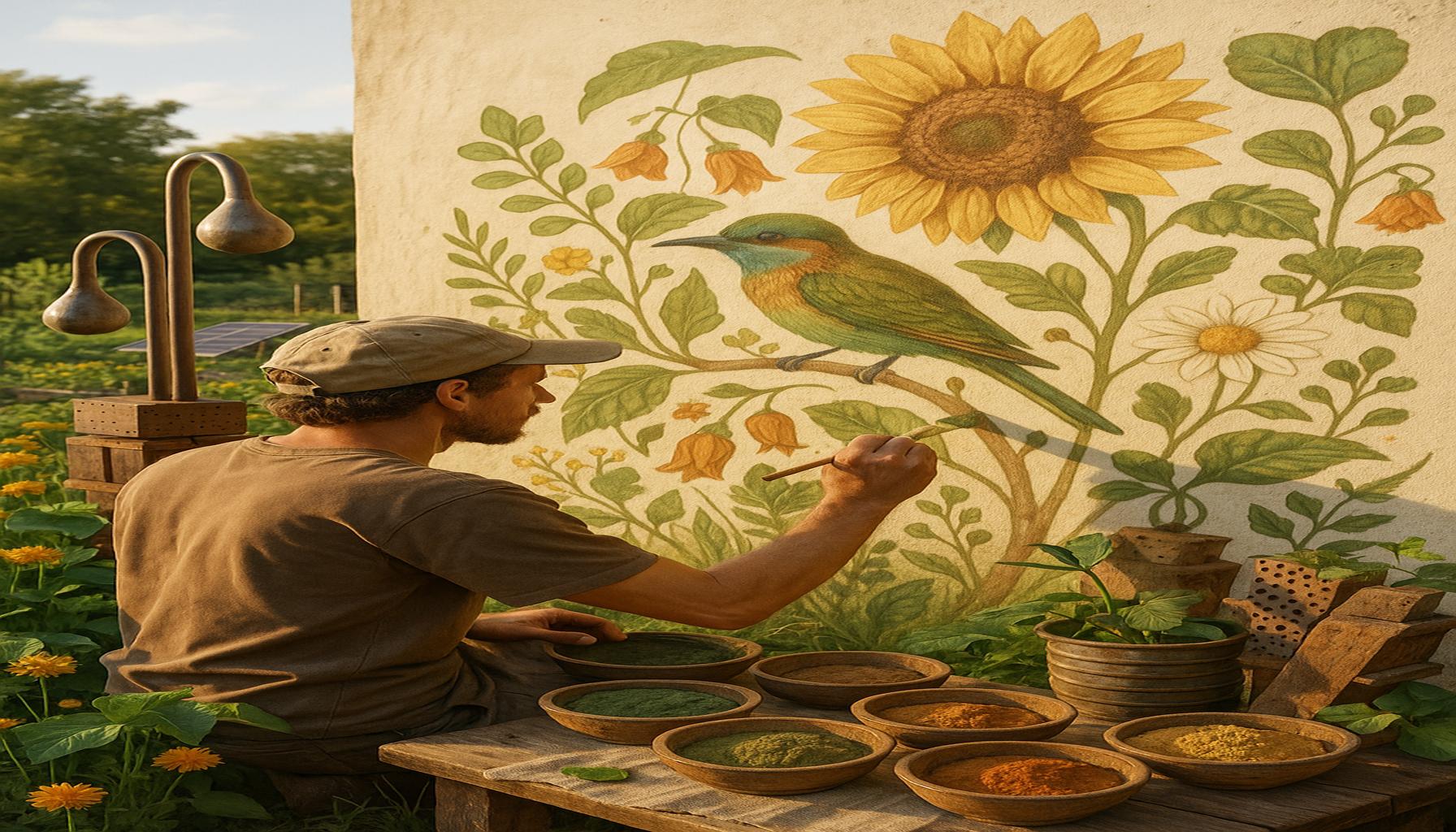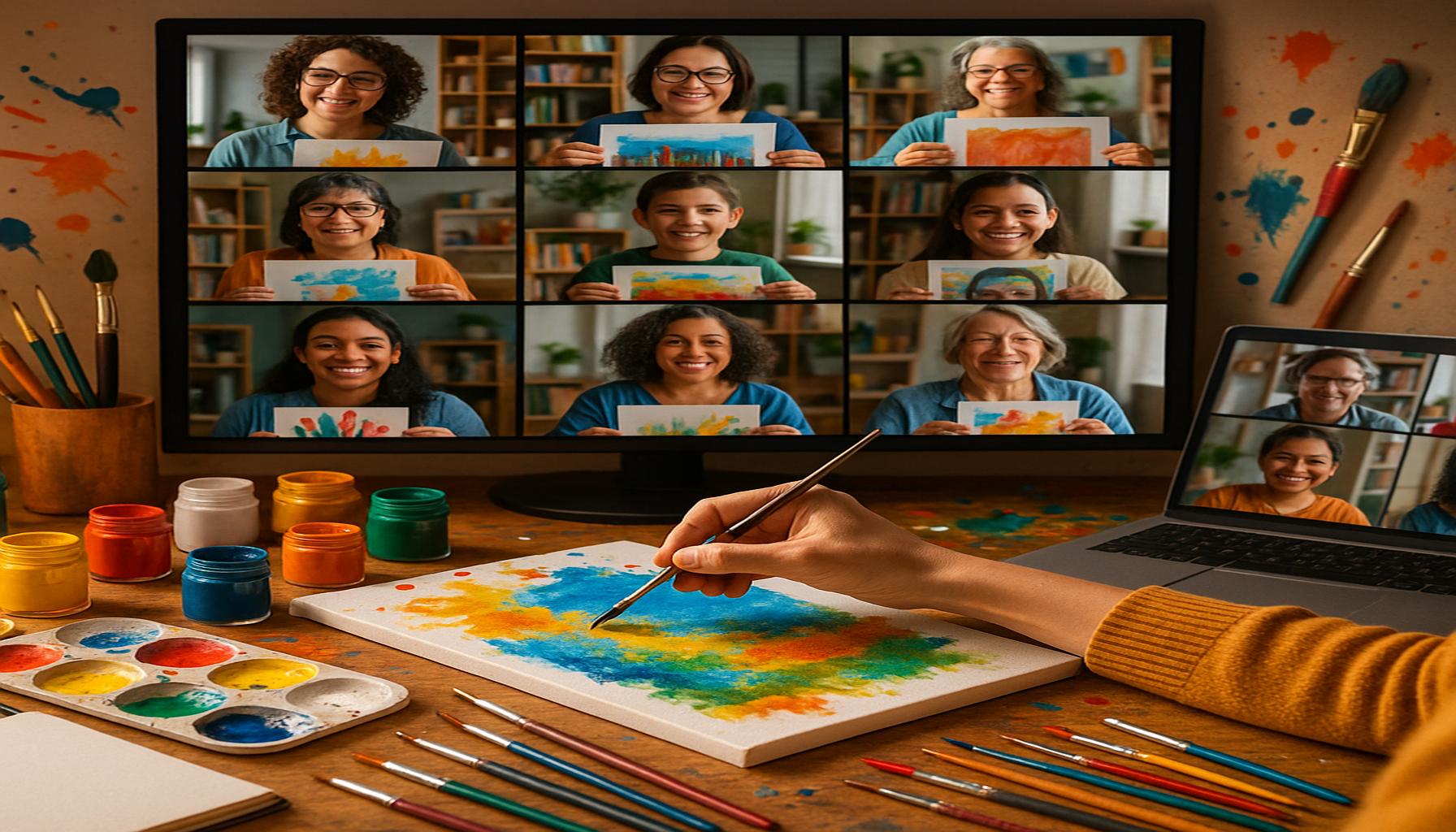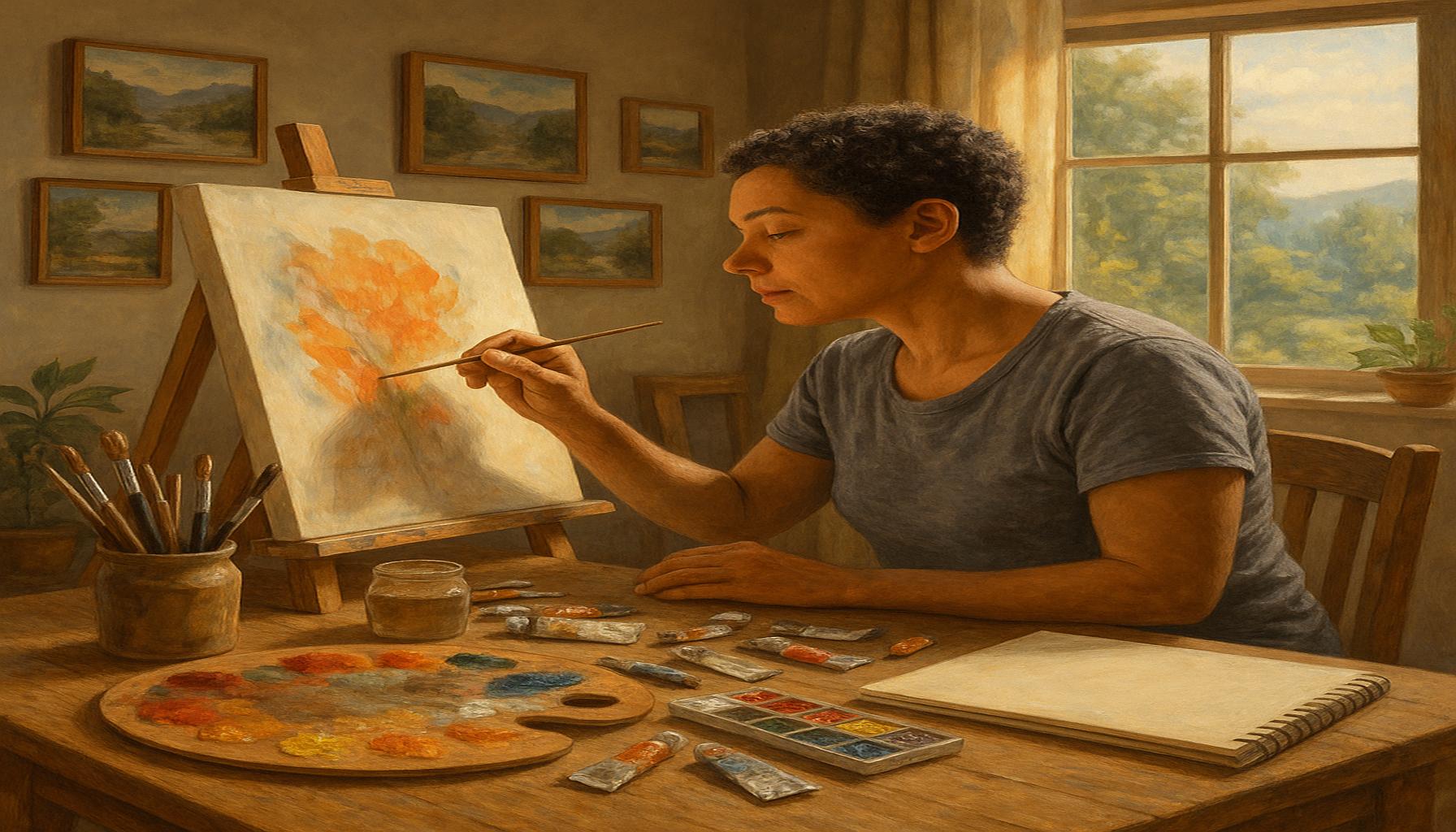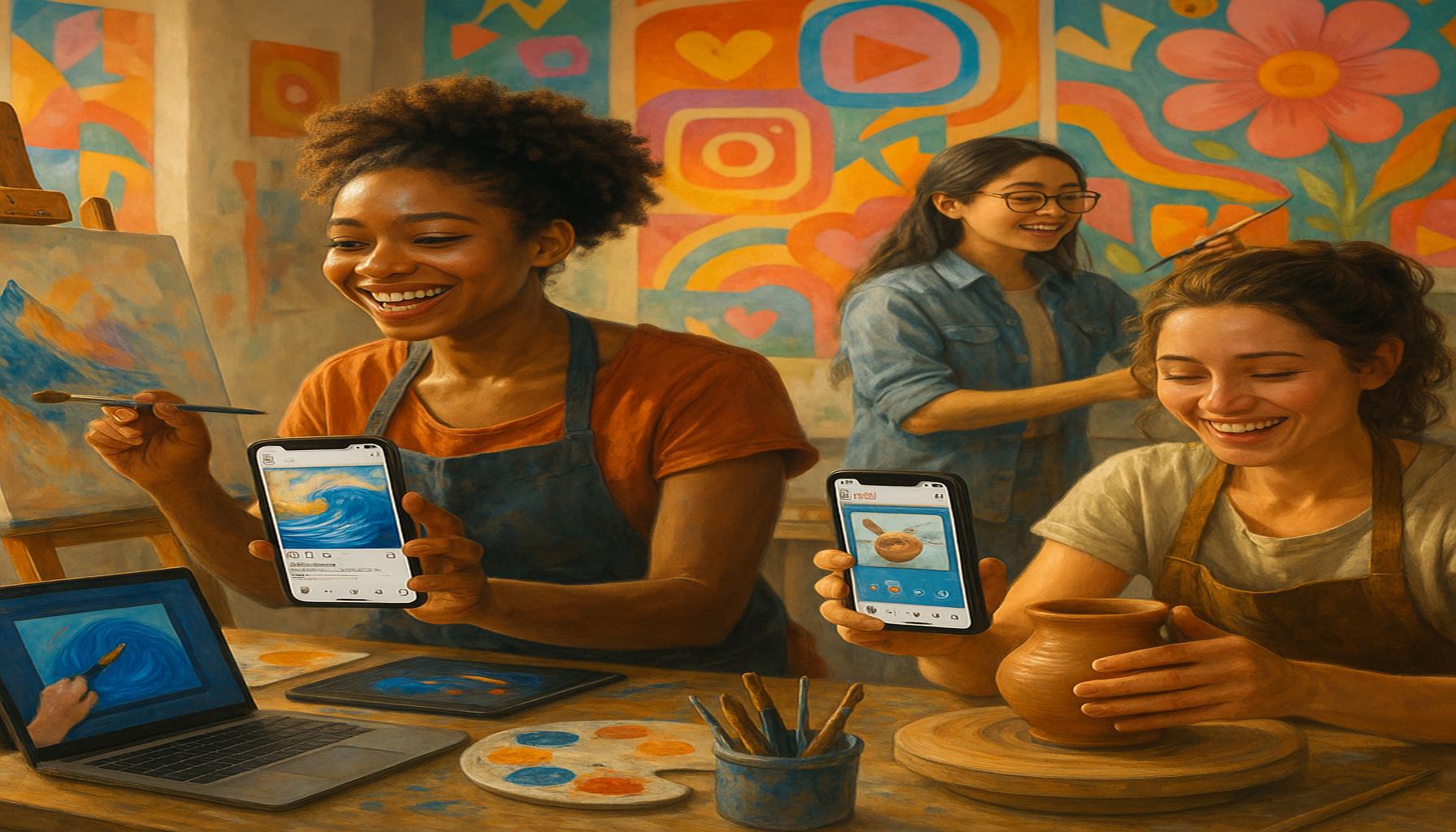Sustainability in Art: How Creative Practices Can Promote Environmental Awareness

Art as a Catalyst for Environmental Change
As our planet faces unprecedented ecological challenges, the art world emerges as a surprising ally in the fight for sustainability. Artists are leveraging their creativity to foster environmental awareness and inspire action. Through various artistic mediums, they are illustrating the pressing issues surrounding climate change, pollution, and biodiversity loss.
This article delves into how artistic practices actively contribute to sustainability through various means, such as:
- Using Recyclable Materials: Many artists are becoming increasingly resourceful by incorporating found objects and waste products into their works. For instance, renowned artist Chris Jordan creates stunning large-scale photography that visualizes the monumental amounts of waste produced, such as his work “Midway: Message from the Gyre,” which captures the impact of plastic on marine life. By utilizing recyclable materials, artists not only reduce their environmental impact but also provoke thought about consumption and waste.
- Advocacy and Messaging: Through thought-provoking pieces, creators are raising awareness about climate change and ecological degradation. Artists like Ai Weiwei employ powerful symbolism in their installations to challenge political and environmental injustices. His artwork often comments on the refugee crisis, illustrating how climate change exacerbates displacement. Such pieces serve as a wake-up call to the public, fostering discussions that transform perspectives and inspire action.
- Community Engagement: Collaborative projects encourage public participation, bridging art and grassroots movements. For instance, community murals centered on environmental themes have popped up across urban areas in the United States, involving local residents in both the creation and storytelling of their art. Projects like “The Mural Project” in Philadelphia utilize public art to highlight urban sustainability and engage local communities in the dialogue about their environment.
Moreover, eco-friendly art initiatives are sprouting across the United States. Numerous exhibitions center on sustainable practices and promote eco-consciousness. Events such as the Eco Arts Fest in California showcase artwork made from sustainable materials and educate attendees on environmental issues through interactive exhibits. Furthermore, community art festivals are increasingly focusing on themes of conservation, with artists collaborating with environmental organizations to promote climate action.
As we explore the innovative ways artists confront environmental issues, we’ll uncover the potential of art as a powerful tool for education and activism. Art has the ability to convey complex scientific ideas in a more digestible and relatable manner, making it a valuable resource for unlocking dialogue. Join us in discovering how creativity can ignite a movement toward a more sustainable world, emphasizing that everyone can contribute to the fight against environmental degradation.
DIVE DEEPER: Click here to discover the evolution of craft techniques
Innovative Approaches to Eco-Consciousness in Artistic Practices
As artists strive to address the urgent issues of climate change and environmental degradation, their innovative practices reveal a strong commitment to sustainability. By embracing eco-friendly methods and fostering community engagement, artists are not only raising awareness but also providing practical solutions to address environmental crises. Here, we examine the various ways in which art promotes sustainability and cultivates eco-consciousness.
Emphasizing Eco-Friendly Materials
One of the most tangible ways artists contribute to sustainability is through their choice of materials. The increasing trend of using recyclable and biodegradable materials in artistic creation allows for a potent form of activism. Artists such as Joshua Winer employ natural elements like soil and plant life in their works, which return to the earth after their exhibition, symbolizing the cyclical relationship between art and nature. This engaging approach challenges both the artist and the audience to reconsider the environmental impact of materials utilized in artistic production.
Incorporating Sustainability into Artistic Narratives
Art functions as an effective medium for storytelling, allowing creators to weave narratives that highlight environmental concerns. Many contemporary artists are utilizing their platforms to explore themes such as deforestation, biodiversity, and climate justice. For instance, Olafur Eliasson, known for his immersive installations, uses his art to remind viewers of the magnificence of natural phenomena and the urgent need for conservation. His work often invites observers to reflect on their relationship with nature, prompting a deeper understanding of sustainability.
Creating Community and Cultural Impact
The intersection of art and community plays a crucial role in promoting environmental awareness. Collaborative art projects draw individuals together, fostering connections and encouraging dialogue about ecological issues. A notable example is the “Banksy of the Bay” mural series in San Francisco, where local artists collaborated to address urban pollution through giant murals that call for environmental consciousness. These inclusive initiatives not only beautify spaces but also empower communities to take ownership of their environmental impact.
- Environmental Art Collectives: Numerous art collectives across the United States focus on environmental themes. Groups like Artivism work to combine artistic practices with activism, hosting events and workshops centered around sustainable living.
- Public Installations: Temporary art installations in urban environments can serve as powerful tools for generating dialogue. These projects spark discussions that educate communities about sustainability and motivate them to partake in environmental initiatives.
- School Programs: Incorporating eco-art education in schools encourages the younger generation to explore sustainability through creative expression. Programs that blend art and environmental science inspire students to envision innovative solutions for a healthier planet.
Through effective communication and collaboration, artists can act as liaisons between environmental science and public understanding. As we continue to explore innovative practices in art, it becomes clear that creativity is not merely an aesthetic endeavor; it is a vital instrument for fostering a collective consciousness about our environmental responsibilities. Engaging with art can open pathways for broader conversations about sustainability, empowering individuals to take action in their daily lives.
Sustainability in Art: How Creative Practices Can Promote Environmental Awareness
| Category | Key Features |
|---|---|
| Eco-Friendly Materials | Artists utilize recycled, non-toxic, and renewable materials. |
| Awareness Campaigns | Art serves as a medium to promote discussions on climate change. |
Through the adoption of eco-friendly materials, artists not only reduce their environmental footprint but also inspire audiences to consider sustainable alternatives. For instance, the practice of using discarded objects in sculptures not only redefines waste but also challenges traditional ideas of value in art. Additionally, art installations that reflect climate issues encourage community engagement, pushing the narrative of sustainability into public consciousness. Furthermore, creative practices extend beyond mere aesthetics; they serve as a platform for awareness campaigns addressing pressing environmental issues. Artists engage with communities to foster meaningful dialogues surrounding sustainability, effectively blending creativity with advocacy. Notably, projects like community gardens or murals can create local engagement while highlighting sustainable practices, ultimately promoting a deeper understanding of ecological matters. This collaborative approach illustrates how art can bridge the gap between creativity and environmental activism, making it an invaluable tool in nurturing a sustainable future. As the art world evolves, its capacity to impact social change continues to amplify, inviting audiences to explore innovative solutions to our planet’s challenges.
DISCOVER MORE: Click here to learn about the psychological benefits of art therapy
Collaborative Endeavors and Global Movements
Artistic practices that promote sustainability often extend beyond individual artwork to foster collaborative endeavors and global movements. These initiatives not only amplify the message of environmental consciousness but also engage diverse voices in the conversation about ecology. By providing platforms for collaboration, artists can amplify the impact of their work and create networks of change agents committed to promoting sustainability.
Art in Environmental Activism
The synergy between art and environmental activism has gained traction in recent years, with numerous artists actively participating in high-profile movements. Participatory art, which involves audience interaction and engagement, encourages community members to contribute their voices and perspectives. Groups like Extinction Rebellion have utilized arresting visuals and performances to inspire a sense of urgency regarding ecological issues. Through acts of creative defiance, these artists not only beautify protests but also inspire meaningful reflection and dialogue about humanity’s impact on the planet.
Global Initiatives and Shoreline Cleanups
Another compelling example of art promoting environmental awareness is the emergence of projects dedicated to restoring and preserving natural habitats. Events such as organized shoreline cleanups are combined with artistic activities, where participants create sculptures from marine debris to draw attention to ocean pollution. Artists like Angela Haseltine Pozzi head initiatives such as Waste to Waves, which incorporates salvaged beach materials into captivating art installations. These compelling displays serve as stark reminders of humanity’s footprint on the environment while celebrating the beauty and resilience of marine ecosystems.
- Art as Advocacy: Many artists use their platforms to advocate for specific causes, such as climate change legislation or the protection of endangered species. Through creative projects like murals, installations, or interactive exhibitions, they amplify critical messages and garner support.
- Transdisciplinary Collaborations: Collaborating with scientists, educators, and local communities empowers artists to create projects that are informed by science while remaining creatively engaging. Combining artistic expression with factual environmental data results in a more holistic approach to environmental challenges.
- Eco-Film Festivals: Sustainable film festivals, such as the Environmental Film Festival in the Nation’s Capital, showcase documentaries, shorts, and narratives that highlight ecological issues around the world, further bridging the gap between art and activism.
In a climate where public awareness is paramount, these artistic initiatives can effectively reach new audiences and ignite passion for environmental stewardship. The collaboration between artists and communities not only enhances the visibility of sustainability issues but also builds a collective movement toward a more eco-conscious world. As artists continue to explore the potential of their media, they contribute more than just beauty; they cultivate a cultural shift towards valuing our planet and insisting on accountability for its future.
DISCOVER MORE: Click here to learn about the evolution of musical instruments
Conclusion
Sustainability in art is not merely a trend; it serves as a vital tool for promoting environmental awareness and inspiring social change. Through innovative approaches that combine artistic expression with ecological principles, artists are reshaping public perceptions about our relationship with the environment. From the engaging works of participatory art that involve community voices to visually arresting installations made from reclaimed materials, artists are effectively highlighting pressing ecological issues and showcasing potential solutions.
As we’ve explored, collaborations between artists and environmental activists create powerful synergies that catalyze broader movements. Initiatives like shoreline cleanups manifest not only as aesthetic statements but also serve practical purposes by fostering community engagement. Furthermore, successful projects leveraging transdisciplinary collaborations bridge the gap between creativity, science, and activism, allowing for informed dialogue around sustainability.
Increased awareness, fueled by vibrant art forms, positions artists as pivotal advocates in the fight against climate change. By leveraging their platforms, artists can advocate for policies that protect our natural resources, ensuring that critical messages resonate with audiences. Thus, art becomes a clarion call, awakening public consciousness and prompting crucial conversations about our environmental stewardship.
In essence, the intersection of sustainability and art opens doors to a future where cultural expression supports ecological integrity. As we continue to support and engage with these creative practices, we not only celebrate artistic endeavors but also participate in a global movement dedicated to preserving the planet for generations to come. The journey towards environmental awareness through art is just beginning, and it invites everyone to join in the collective pursuit of a sustainable future.


